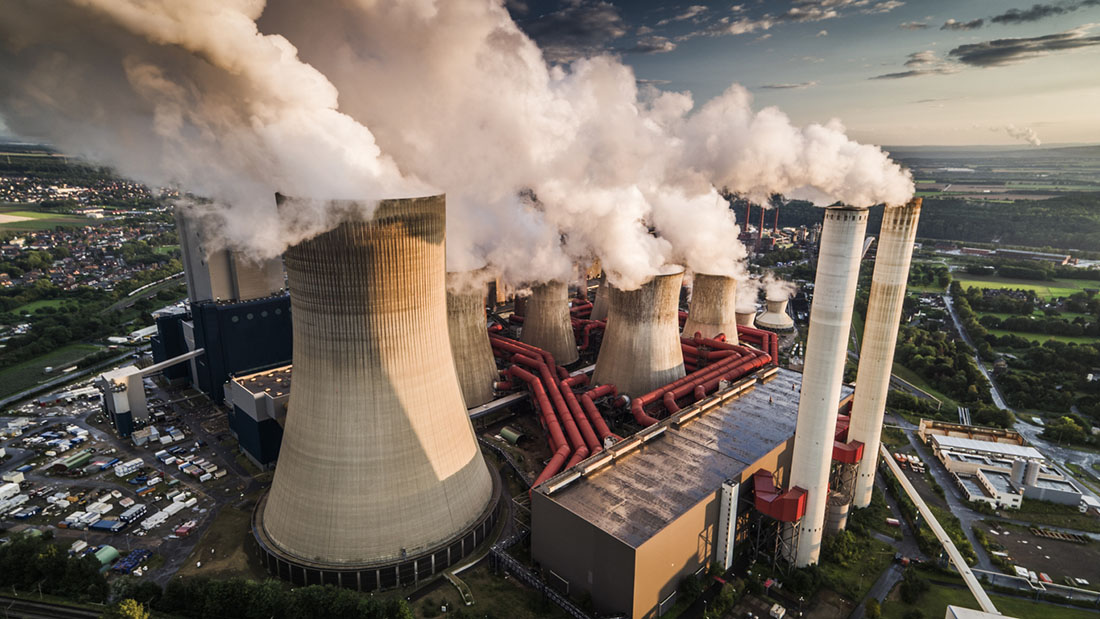A smaller, more focussed set of negotiations is expected at COP29 in Azerbaijan from 11-22 November, ahead of a landmark COP in Brazil in 2025. However, the stakes for the climate and the trust-based system that the Paris Agreement relies on are high. Our Net Zero Intelligence Unit sets out the three key opportunities for COP29 to accelerate climate action.

World leaders and negotiators are set to convene in Baku, Azerbaijan from 11-22 November 2024 for the annual UN climate change conference. COP29 is being pitched as a slimmed-down, technical affair, with more limited expectations than the landmark COP30 set to be held in Brazil in 2025.
The Azerbaijani COP29 presidency has limited the number of attendees (50,000 are expected versus last year’s 80,000) and is restricting the focus of the conference to ‘enhancing ambition’ and ‘enabling action’ on the road to COP30. It is undeniable that next year’s COP in Brazil is likely to mark more of a pivotal moment in the world’s fight against climate change: it will mark ten years since the signing of the Paris Agreement and just five years until the 2030 target to halve global emissions.
However, every COP is an opportunity to accelerate the climate action urgently required to get the world on track for meeting the Paris Agreement, and COP29’s focus on finance – the ultimate enabler of the Net Zero transition – sets it apart as an important test for the intergovernmental system for addressing the climate crisis. To truly set the world on the ‘road to COP30’, COP29 needs to deliver on three key priorities: an ambitious new climate finance target, clearer architecture for trading international carbon credits, and increased commitment to national climate targets.
Agreeing a new global target for climate finance
UNFCCC Secretary, Simon Steill, has described the need for a ‘quantum leap’ in the scale of climate finance provided and COP29 is the moment governments need to put a number to it.
COP29 has been dubbed the ‘Finance COP’, as world leaders are under pressure to agree a new target for global climate finance. Under the terms of the Paris Agreement, a New Collective Quantified Goal (NCQG) needs to be agreed, setting out the amount of finance that will be provided to support climate mitigation and adaptation activities around the world from 2025 onwards.
Finance is the ultimate enabler of a Net Zero transition that must take place in the context of less developed countries often having contributed very little to the problem. Developed countries’ willingness to pay for the transition is seen by some as an ‘acid test’ for the seriousness of their commitment to tackling climate change at a global scale.
The negotiations at COP29 are set against a backdrop of decidedly underwhelming levels of climate finance from developed countries to date. The previous goal to provide $100 billion annually by 2020 was repeatedly missed and only eventually realised in 2023 and even then, there are disputes on whether this has ever been met.
As with most COPs, negotiations are likely to be fraught until the eleventh hour, and three key elements of the NCQG are likely to be major sticking points.
The sum of money
While the NCQG must be more than the previous target of $100bn, under the ‘rachet’ mechanism of the Paris Agreement, meeting the true climate finance need will be a colossal task. Estimates vary, but the amount of climate finance needed annually to support the Net Zero transition is certainly in the trillions not billions. Climate Policy Initiative estimates that $6.2 trillion is needed annually between now and 2030, rising to $7.3 trillion annually by 2050. National climate targets (Nationally Determined Contributions or ‘NDCs’) also help to illuminate the scale of challenge: 91 developing countries have provided estimates of financial need in their NDCs, totalling $4.5 trillion.
Some developed countries, including the US, are putting forward a figure of around $1 trillion for the NCQG, but developing countries are calling for multiple trillions. If the NCQG is perceived by developing countries as insufficient, the international trust that the architecture of the Paris Agreement hinges on could be at risk.
Who needs to pay and who receives the finance
It’s already clear that negotiations are likely to be complicated by the issue of clarifying who exactly will give and receive climate finance.
When the UNFCCC was created in 1992, categories of countries (known as ‘parties’ to the UNFCCC) were created to reflect the varying levels of responsibility for causing climate change and the interlinkages of this with levels of development. That categorisation was baked into the terms of the previous climate finance target made at COP15 in Copenhagen, which straightforwardly outlined that developed countries needed to provide $100bn annually to developing countries by 2020.
Some parties, including the EU, now argue that the list of ‘developed’ countries no longer reflects the global economy or responsibility for climate change, and that rapidly expanding economies such as China should bear more responsibility for international climate finance (China does already contribute some finance through its ‘South-South Climate Cooperation Fund’). China is the world’s largest emitter of greenhouse gas emissions today, but historic emissions data shows that the US is still overall the largest contributor to climate change, responsible for 20% of total greenhouse gas emissions to date. The EU insists that the UNFCCC categorisation should recognise how responsibility for emissions has changed over time, and EU officials are warning that agreement on the NCQG is contingent on China contributing funds.
The NCQG negotiations will also attempt to resolve the challenge of ensuring available climate finance reaches the countries most in need. Analysis shows that at present just a small fraction of the finance needed to scale renewable energy is received by African nations, illustrative of a global climate finance imbalance that risks the least-developed economies being left behind in the energy transition. The NCQG needs to outline a clear process for quantifying the needs of developing countries and ensuring effective and proportionate flows of capital.
What kind of finance?
Another sticking point for the NCQG negotiations will be the definition of climate finance itself. Should it refer solely to grants? Or should loans count?
The majority of the original $100bn target has taken the form of loans, drawing criticism from developing countries, many of which are already saddled with sky-high debts and repayment obligations, and are reluctant to increase their debt-burden. Indeed, recent data suggests that the world’s least developed countries spend twice as much servicing debts as they receive in climate finance.
The Bridgetown Agenda, brainchild of Prime Minister of Barbados, Mia Mottley, has a host of recommendations for how the international financial system can be reformed to ensure vulnerable states and developing countries can access debt-relief and both the grant-based and low interest climate finance needed to realise their development goals. Developing countries and a strong cohort of NGOs are pushing for the NCQG to avoid ‘vague commitments’ by specifying the need for grants, rather than loans.
Developing and developed countries will also likely differ in their negotiating positions on the emphasis in the NCQG between provision and mobilisation of climate finance. Developing countries are keen to focus on commitments to direct provision of finance, primarily in the form of grants, whereas some developed parties, such as the EU and the USA, see the NCQG as an opportunity to capitalise on the potential of mobilising private sector finance.
Private finance is no doubt needed to enable the Net Zero transition, but developing countries are wary of the promise of mobilising private finance instead of committing to public provision. They point to the Just Energy Transition Partnerships (JETPs) announced for South Africa, India, Indonesia, Vietnam and Senegal, which promised to mobilise approximately $46 billion of private investment, but the public finance designed to kick start crowding-in of private finance simply hasn’t resulted in the sums expected.
On the sidelines of the official NCQG negotiations, the Azerbaijani Presidency is launching its own initiative to help scale private finance: the Climate Finance Action Fund (CFAF). The CFAF will provide ‘highly concessional’ and grant-based funding for developing countries responding to the impacts of climate change from a central reserve of funding built up from voluntary annual contributions from fossil fuel producing countries and companies. While the CFAF could be an important route to mobilising private finance, it could also be a way for fossil fuel producers to claim they are contributing to addressing climate change while continuing to expand their operations. The CFAF would engender more trust on the international stage if it came with a requirement for funders to set science-based emissions reductions targets to ensure financing is matched with credible mitigation action.
Finalising the architecture for international carbon markets
COP29 is also set to be an important moment for one of the most contentious and thorny elements of the Paris Agreement: Article 6.
Article 6 refers to the architecture for enabling the international trading of carbon credits for the purposes of fulfilling national climate commitments and could be a critical route for mobilising capital flows towards clean technologies and nature-based solutions. However, the rules and methodologies governing a centralised international structure for the verification and trading of carbon credits (the Paris Agreement Crediting Mechanism) have so far prevented the operationalisation of the mechanism, with talks collapsing at COP28 last year. Until recently, it looked unclear whether COP29 might result in a similar dead-end on this issue.
However, a surprise ‘early win’ for the COP29 Presidency now looks on the cards. The technical supervisory body for Article 6.4 managed to agree two key outstanding elements (relating to carbon removals and the methodologies that govern the claiming and assessment of creditable emissions reductions and removals) at pre-COP talks in Baku in October. Unless a negotiating party objects, it’s likely the recommendations of the supervisory body will be agreed at the outset of COP29, a move that could build some forward momentum in a similar way to last year’s early agreement on the operationalisation of the Loss and Damage Fund on day one of COP28.
Agreement at COP29 will trigger the operationalisation of the Paris Agreement Crediting Mechanism, which will enable a UNFCCC architecture for the trading of carbon credits supportive of Paris Agreement aims including ensuring the credits contribute to sustainable development and deliver an overall mitigation in global emissions. How quickly the mechanism can be actioned will determine the impact that it can have towards 2030 climate targets.
The renewed ambition and technical assistance needed for NDCs 3.0
The third key priority for COP29 is the need for it to act as the final push for countries to submit stronger national climate targets for 2035 (Nationally Determined Contributions, NDCs), which are due in February 2025. To make a meaningful contribution to the Paris Agreement, they need to respond to the findings of the first Global Stocktake in 2023 — which measured whether countries and stakeholders were collectively making progress against the goals set in the agreement, — by levelling up commitment to urgent emissions reductions.
To remain on track for reaching Net Zero by the middle of the century, emissions need to fall by 45% by 2030 from a 2019 baseline. However, full implementation of all current NDCs put the world on track for just a 5.3% reduction. Developed countries should come to COP29 with their revised NDCs for 2035, which should include not only ambitious, economy-wide emissions reduction targets, but also clear plans for achieving those targets including through a commitment to phasing out fossil fuels.
Many developing countries note that finance and technical assistance are major barriers to setting and implementing more ambitious NDCs. The presidencies of COP28, 29 and 30 have formed a ‘Troika’ to support development of 1.5C-aligned NDCs for 2035. Progress has already been made: the UN Development Programme has launched its Climate Promise 2025 programme to provide capacity building-support for NDCs. However, the momentum that COP29 is able to generate on NDCs is linked inextricably to the outcome of the negotiations on climate finance. If COP29 does not deliver a strong NCQG that enhances trust, capacity and resilience globally, it is unlikely that NDCs for 2035 will be sufficient to deliver on the Paris Agreement.
COP29 will shine a light on the trust-based system of the Paris Agreement
While media reports of the COP29 build-up have been awash with stories of limited attendance and limited expectation, it would be wrong to dismiss COP29 as merely a checkpoint on a steady road to a more meaningful COP next year.
The negotiation on the new climate finance goal is an inflection point for global climate action. The links between the financial agreement and the ability of countries to deliver climate mitigation shines a light on the trust-based system of the Paris Agreement, which relies on voluntary contributions proportionate to countries’ differentiated responsibilities for causing and addressing the climate crisis.
Both inside the formal negotiation rooms and on their periphery, COP29 needs to demonstrate that world leaders, businesses and financial institutions can turn ambition into action by providing the fundamental enablers of the Net Zero transition: money and trust. COP29 must be a significant leap for enabling collective climate action, rather than an incremental step on the road to COP30.
With thanks to Lindsey Hibberd, Associate Director, for expertise and input on Article 6 and international carbon markets.






